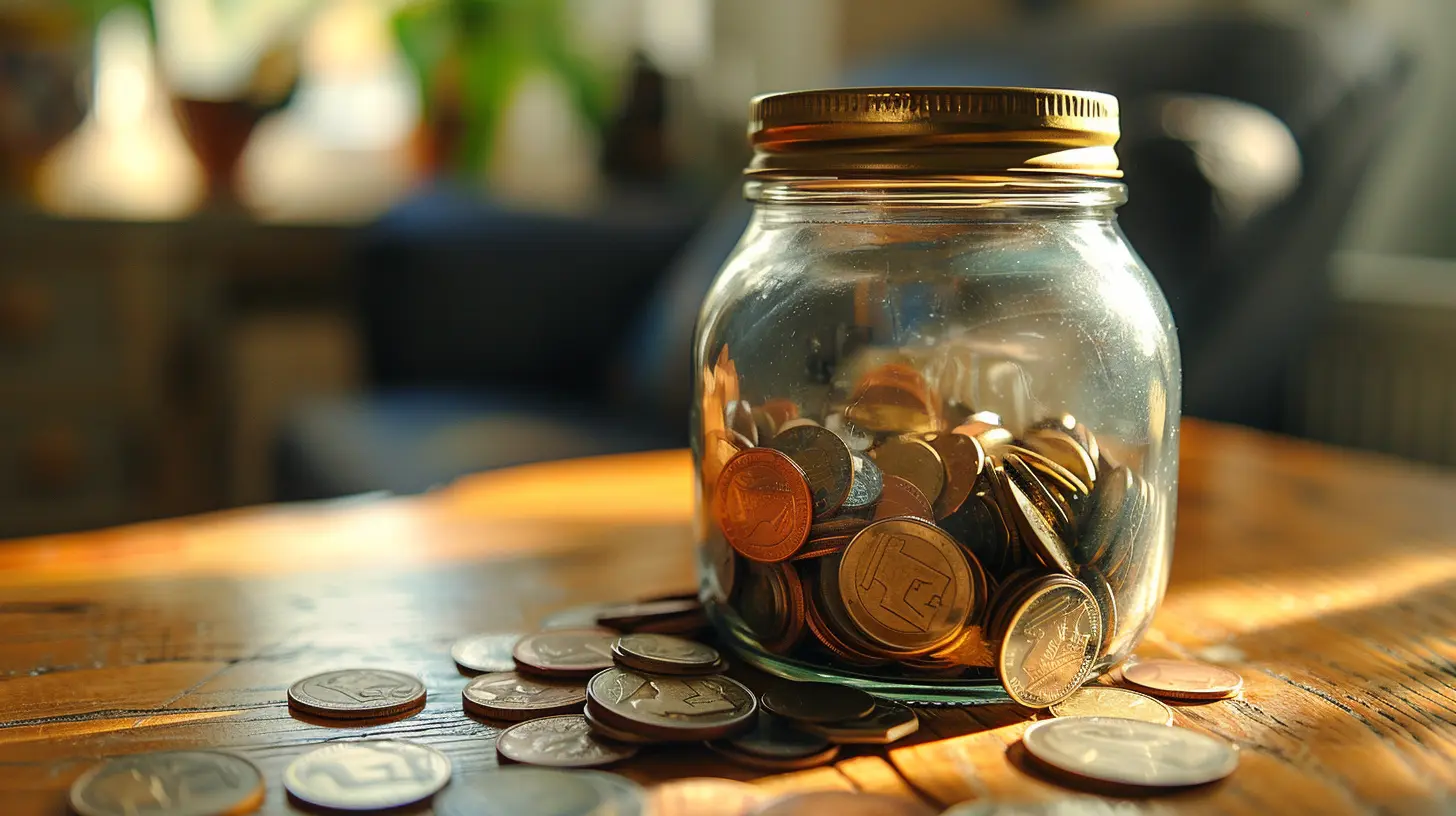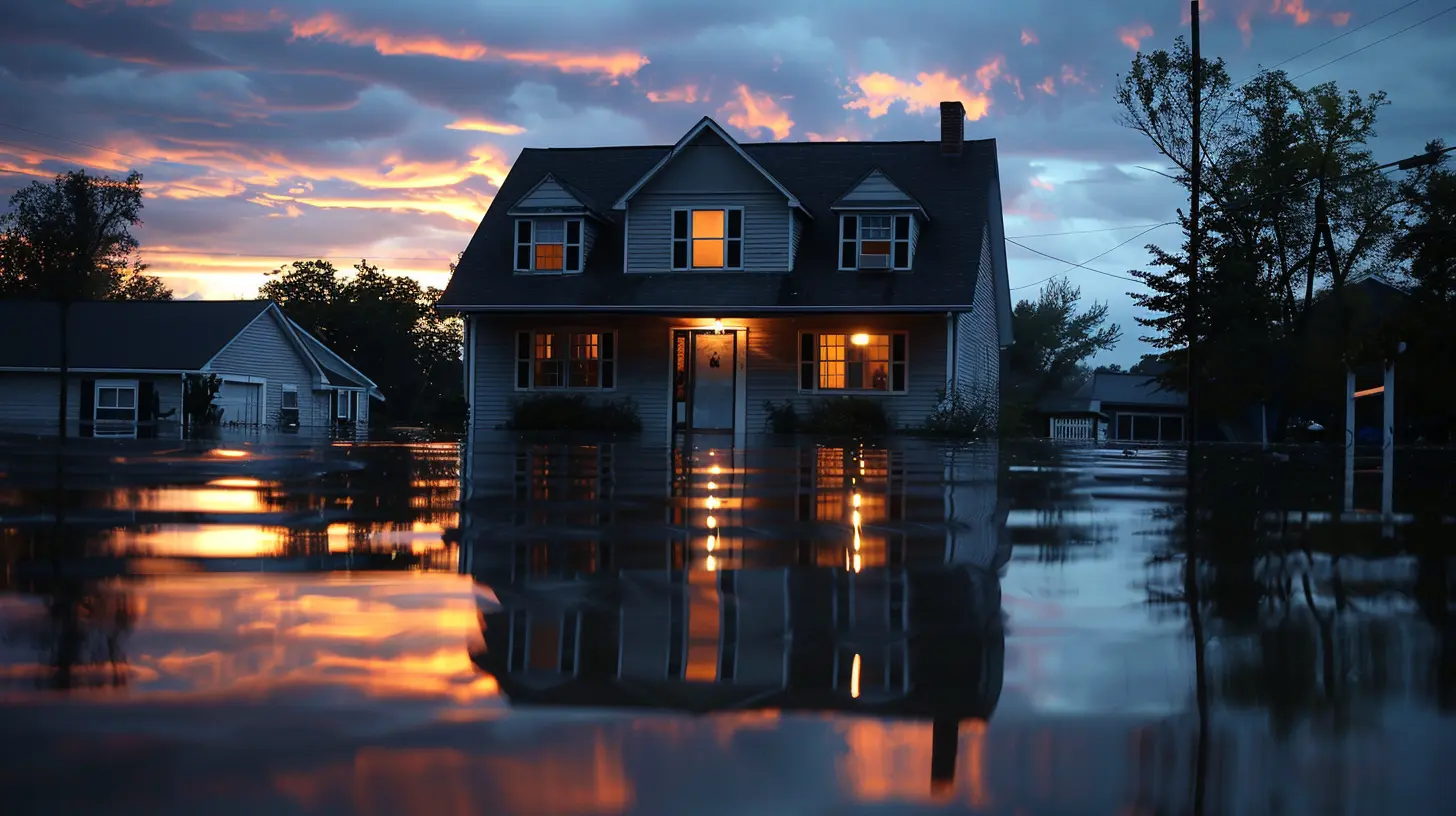Emergency Fund Considerations for Homeowners vs. Renters
30 October 2025
Let’s play a fun game called “Life Happens.” You never know what's behind Door #1 (a leaky roof), Door #2 (job loss), or Door #3 (your dog swallowed your AirPods… again). But in this thrilling game of surprise bills and financial anxiety, there’s one magical buffer that stands between you and utter chaos: an emergency fund.
If you're thinking, “Yeah, I’ve been meaning to start one,” congratulations! You’re just like 80% of the adult population.
But here’s the twist: not all emergency funds are created equal. Homeowners and renters live in two completely different universes when it comes to financial responsibilities. So buckle up, because whether you own a charming cottage with a mysterious creak in the floorboards or rent a modern apartment where the landlord doubles as a magician (watch them disappear when something breaks), this article has your back. Let’s dive into the nitty-gritty of emergency fund considerations for homeowners vs. renters.
What the Heck Is an Emergency Fund Anyway?
Okay, let’s start at square one. An emergency fund is essentially your financial safety net—the money you squirrel away for unexpected (read: annoying) expenses. Think of it as that one friend who always has jumper cables, band-aids, and snacks in their backpack. Always prepared, never panicking.An emergency fund is not:
- Your credit card.
- That $20 you found in your winter coat from last year.
- Bitcoin (please, let’s not even go there).
Instead, it should be cold, hard, liquid cash—sitting safely in a high-yield savings account, just chilling, waiting to be the hero you deserve.
But here’s where things get interesting…
Why Homeowners and Renters Aren’t Playing the Same Game
If renters are cruising life in a convertible with the top down (and some light rain), then homeowners are steering a 12-wheeler truck during a snowstorm—with a trailer full of expensive appliances.Let me explain.
Renters: “Not My Problem” Vibes
As a renter, your financial responsibilities tend to be pretty fixed. Monthly rent? Predictable. Broken dishwasher? Landlord’s problem. Leaky roof? Still not your monkey, not your circus.So, renters generally face fewer surprise repair bills. Your emergency fund can focus more on personal “oopsies” like:
- Losing your job
- Medical emergencies
- Surprise travel (because Aunt Carol’s birthday party turned into a family intervention)
How much should renters aim for in an emergency fund?
👉 Typically 3 to 6 months' worth of living expenses is the golden rule. If you’ve got a stable job and no dependents, you could lean closer to the 3-month side. If you’re freelancing with a cat that needs designer prescription food, shoot for 6 months or more.
Homeowners: Welcome to the Financial Wild West
Oh, homeowners. You thought buying a house was the finish line? Plot twist—it’s just the starting gate.Unlike renters, homeowners must play the role of landlord, handyman, and bankrolled adult simultaneously. Your emergency fund needs to be ready for:
- Furnace fails in February? That’ll be $3,500, please!
- Roof leaks? Say hello to your $8,000 vacation-turned-repair.
- Water heater explodes at midnight? Perfect timing!
You also need to worry about property taxes and home insurance premium hikes, which can jump higher than your caffeine bill during tax season.
So how much should homeowners stash?
👉 Typically 6 to 12 months' worth of expenses, plus an extra buffer for home repairs. Many experts suggest setting aside at least 1% to 3% of your home’s value annually for maintenance. So if your home is worth $300,000, better have $3,000 to $9,000 tucked away. And yep, that’s in addition to your emergency fund. Oof.
Let’s Talk Unexpected Costs (Because They Will Happen)
You know the quote, “Hope for the best, prepare for the worst”? Yeah, that’s basically the emergency fund motto. Let’s break down some real-life surprises, side-by-side.| Situation | Renters | Homeowners |
|--------------------------|----------------------------|----------------------------|
| AC breaks | Call landlord. Wait. Repeat. | Call HVAC guy. Cough up $5,000. |
| Plumbing issues | Free maintenance (if you're lucky). | Dig into savings. Possibly your lawn too. |
| Pest infestation | Ask for help. Maybe get it. | Fork out hundreds. Or live with roommates named “mice.” |
| Job loss | Cry in apartment. Eat ramen. | Cry in mortgage. Eat cheaper ramen. |
Moral of the story? Renters get to pass the financial baton a lot more often, while homeowners run the whole marathon alone—with bricks in their backpack.
Emergency Fund Strategy: Tailor It Like a Fancy Suit
One-size-fits-all advice? Not here, friend. Your emergency fund needs to fit your lifestyle tighter than your jeans after Thanksgiving.For Renters: Keep It Lean, Mean, and Accessible
Your emergency fund goal is to cover:1. 3–6 months of essential expenses
2. Medical deductibles
3. Unexpected travel or relocation
4. Insurance deductibles
Pro tip: Don't count gym memberships or crazy takeout habits as "essential." (Unless your therapist says sushi and cardio are your only coping mechanisms. Then maybe.)
Also, keep that emergency money liquid. Translation: don’t invest it. Stick it in a high-yield savings account that’s boring, reliable, and super accessible. Think grandma's meatloaf—not exciting, but deeply satisfying in a crisis.
For Homeowners: Think Bigger, Scarier, and More Grown-Up
You’ve got a mortgage, taxes, repair costs, and probably a dog that chews drywall. Your fund should flex harder than a bodybuilder in a mirror.Here’s what to aim for:
1. 6–12 months of full expenses (mortgage, utilities, food, etc.)
2. 1–3% of home value stashed annually for repairs
3. Separate savings account just for home maintenance? Not a bad idea.
Oh, and keep receipts. You’ll want documentation when your “fixer-upper” tries to fix your entire bank account.
Should You Combine Emergency Funds With Other Savings?
Short answer: Please, no. That’s like putting your vacation money and your rent money in the same jar. Next thing you know, you’re sipping margaritas while your electricity gets shut off.Keep separate buckets for:
- Emergency fund (for real crises)
- Travel fund (for that Bali sunset you saw on Instagram at 2AM)
- Home maintenance fund (especially for homeowners)
- New car fund (because 1998 won’t last forever)
Label your accounts if needed. Treat your money like cats—each needs its own space or things get real ugly, real fast.
What About Insurance? Isn’t That My Safety Net?
Sure, insurance is helpful. But you know what's not fun? Deductibles. Waiting periods. Hold times longer than your grandma’s stories.Insurance can mitigate the damage—but it won’t eliminate the need for an emergency fund.
Also, insurance doesn’t cover everything. For example:
- A home warranty might fix your appliances, but not your cracked foundation.
- Health insurance helps with hospital bills, but not your rent while you're out of work.
So yes, get insured—but your emergency fund is Plan A. Always.
Common Mistakes: Let’s Laugh (And Then Fix Them)
🎯 Mistake #1: Thinking credit cards = emergency fundSpoiler alert: That’s just future-you borrowing from future-you... with interest. It’s like slapping a Band-Aid on a broken leg.
🎯 Mistake #2: Only saving for best-case scenarios
“Oh, I’ll probably find a job quickly.” Cool. But what if you don’t?
🎯 Mistake #3: Dipping into your fund for concert tickets
No, Beyoncé tickets are not a medical emergency. Even if she is a religion.
🎯 Mistake #4: Forgetting to adjust your fund as life changes
New baby? Moving cities? Changing jobs? Time to re-evaluate your safety net before life pulls a fast one on you.
Final Thoughts: It’s Not “If” Something Happens, It’s “When”
Let's be real for a minute—adulting is just a series of expensive lessons wrapped in receipts. Whether you're unlocking your dream home or surviving on boxed wine and ramen in your rental, emergency funds are your behind-the-scenes MVP.For renters, it’s about staying afloat and keeping life hiccups from turning into catastrophes.
For homeowners, it’s about being your own financial superhero—complete with an emergency savings cape (probably made of spreadsheets and anxiety).
So go ahead—start small, start messy, just start. Your future self (and possibly your future roof) will thank you.
all images in this post were generated using AI tools
Category:
Emergency FundAuthor:

Knight Barrett
Discussion
rate this article
1 comments
Evelyn Turner
This article sheds light on a fascinating distinction between homeowners and renters when it comes to emergency funds. It's intriguing how each group navigates financial preparedness differently. I'm curious to learn more about specific strategies homeowners can employ compared to renters, especially in unexpected situations. Great insights!
October 31, 2025 at 12:47 PM

Knight Barrett
Thank you for your thoughtful comment! Homeowners often benefit from strategies like setting aside funds for maintenance and repairs, while renters may prioritize flexible savings for unexpected expenses. I’ll explore these distinctions further in future articles!


